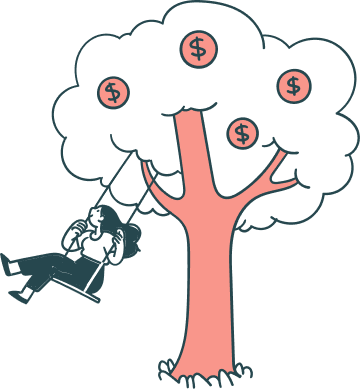Let’s face it. Asking for money is intimidating. And, it can feel a bit awkward.
It’s hardly something any of us enjoy doing, but as a fundraiser, it must be done–and often. The best way to become more comfortable and confident with it is to see results and know you’re doing it right.
No matter if you prefer to fundraise online, through direct mail, email, Text-to-Give, or by any other method of your choosing, here are five tips to always keep in mind when asking for donations.
1 . Know your donors–and LISTEN to what they have to say.
Before you can even think about asking for donations, it’s crucial to know who your donors are in order to be able to answer “why” they should give to your organization.
- Research your donors both as individuals and as a collective group to get a sense of who you’re talking to.
- What do they care about?
- What are their passions?
- What other causes do they support?
- Do they have a history of giving?
- What concerns do they have about giving?
- What do they object to?
- Don’t do all the talking. LISTEN to your donors. Instead of jumping right in and telling them about the program you THINK they’d be interested in giving to, allow them to talk and tell you about themselves. They’ll tell you more about who they are, and then it will become crystal clear which specific fundraising programs you should focus on asking for money for with each specific donor.
2 . Know what you’re asking.
It may seem intuitive, but it’s easy to get caught up in the “how” to ask and forget “what” you’re asking for. Keep in mind that if you’re too vague about what you’re asking for, your donors may feel less compelled to give. People want to give to a CAUSE, not an organization.
This builds off of #1–knowing (and listening to) your donors so that you recognize what they WANT to be asked.
3 . Don’t be boring.
Now that’t you’ve focused on WHO you’re asking and WHAT you’re asking for, it’s time to focus on the HOW. How do you go about successfully asking for donations?
Three common mistakes are:
- a lack of creativity (a.k.a. playing it safe), and
- overly formal language
- an overly complicated design scheme
All of these fail miserably when it comes to keeping your audience engaged and focused on what you have to say.
It’s the same advice you’d get when writing a topic sentence for a paragraph, or the subject line of an email. You only have so much time or so much space to capture a donor’s interest and get them to keep reading. You wouldn’t waste this time or space with boring language, right?
Asking for donations is the biggest risk you will take in fundraising. But it’s not enough of a risk to simply ask for money…every organization must do this to survive. The risk is in HOW you ask. Don’t be afraid to discover a personality for your organization–your organization most likely already has a distinct voice through your website and social media accounts–and let it shine through in your ask.
In terms of effective design, simple and clean is best for capturing attention. When choosing images, less clutter means less confusion so keep it focused on a few images that keep it interesting but not overwhelming or distracting. Just as it’s a good idea to develop a voice through your writing, your graphic design helps form a recognizable and trusted brand.
It’s also a good idea to also use a variety of channels when asking. This can also help you loosen up formal language you might associate with direct mail or email.
Consider again, who your donors are and WHERE they are. What percentage of your donors might prefer social media? How many of them read emails or text messages on their smartphones, or are more likely to visit your website on a mobile device?
Your language and creativity should reflect the channel used to reach donors, and can include friendly language, informative content, and specific details in the form of pictures or videos.
4 . Don’t be scared of rejection.
Rejection hurts doesn’t it? We’ve all been there.
Not everyone you ask is going to go running for their wallets. And that’s okay. What’s most important is that you present your organization to donors as one that can be trusted, and you build a relationship that can lead a donor to click that “donate” button in the future.
However, if you make the process as easy and quick as possible by providing an express donation option (hint: this means donors won’t actually need their wallets to give anymore), you reduce the chance of rejection.
Express donations can be in the form of buttons placed in emails or on your website, or in the form of a Text-to-Give number that makes giving accessible to your donors from anywhere at any time.
5 . Practice how you ask.
Hardly anything is perfect the first time you give it a go. That’s just life. So like anything else, practice practice practice!!
The best way to be successful–and the best way to become more comfortable with the awkward Q–is to practice.
You might not get it right at first and you might get rejected. But keep playing around with your ask and take note of what works and what doesn’t. Have fun with it and your donors will take notice. And don’t forget, your donors want to feel like they are making an impact on the world so ask be creative, take risks, and you’ll connect with them and find success.
Read More:
–Email Fundraising: What You Can Do to Prevent Lost Donations
–So You’ve Got A Great Cause…Now What?
–3 Keys to Unlock the Door to Donor Acquisition and Retention



